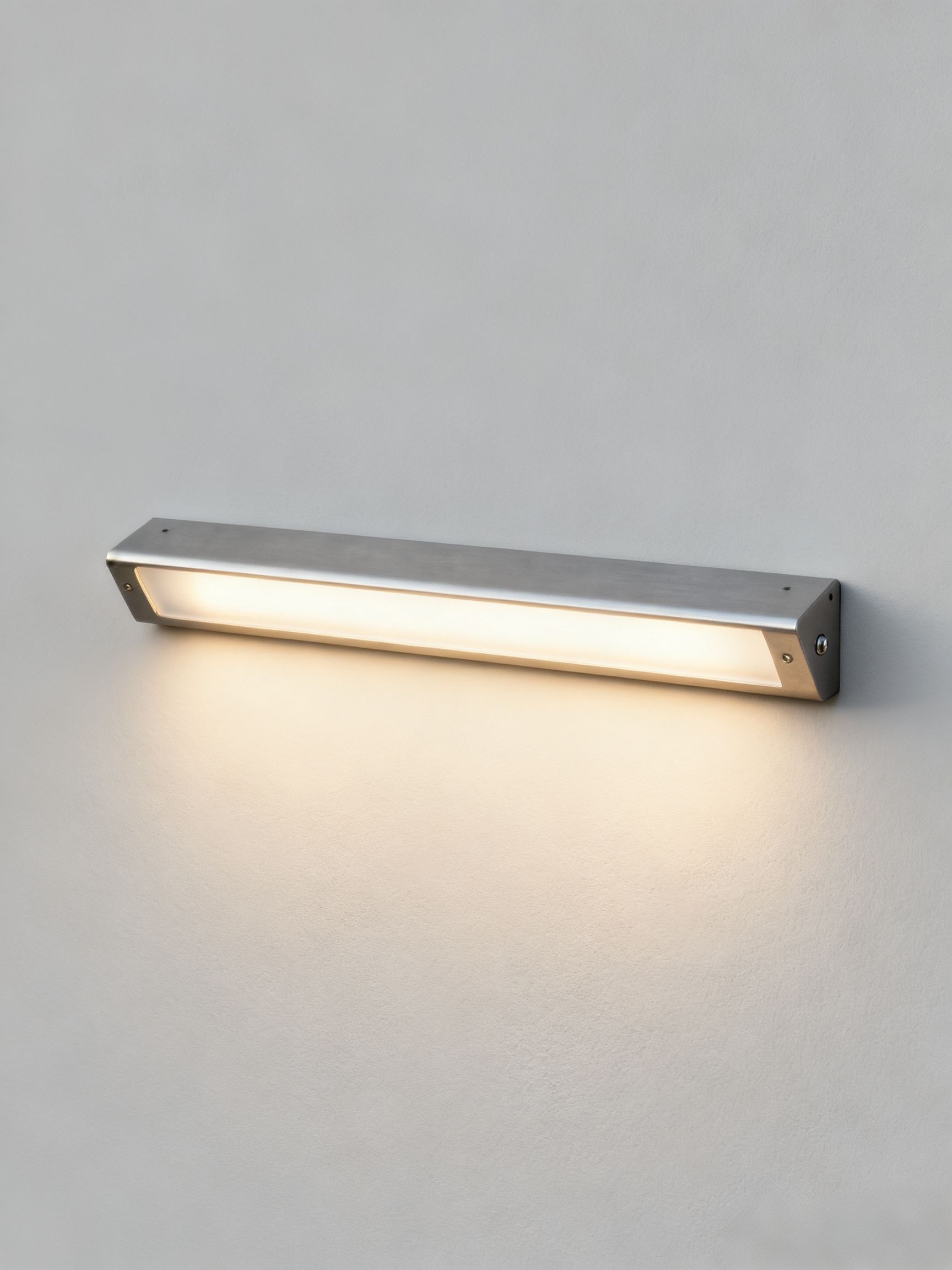I. Patio Outdoor Lanterns 101: Key Types to Match Your Space
Patio outdoor lanterns aren’t a one-style-fits-all solution. The best choice depends on your power access, climate, decor theme, and how you use your patio. Here are the core types to consider, along with their unique benefits and ideal uses:
1. Solar-Powered Patio Lanterns: Eco-Friendly & Wireless
Solar-powered patio lanterns have become a top pick for homeowners thanks to advancements in solar panel efficiency and battery technology. They harness sunlight during the day, storing energy in rechargeable lithium-ion batteries to power warm illumination after dark—no electrical outlets or wiring required.
- Key Features: Most models include a monocrystalline solar panel (for maximum sun absorption), a 1200mAh-4000mAh battery, and dusk-to-dawn sensors that automatically turn lights on/off. High-end options may offer adjustable brightness or color-changing modes.
- Performance Highlights: With 6-8 hours of direct sunlight, expect 8-12 hours of runtime. Look for models with USB backup charging for cloudy spells—perfect for regions with inconsistent sun.
Pros: Zero electricity costs, easy DIY installation (no wiring), eco-friendly, and safe for renters or patios without power access. Dusk-to-dawn sensors add convenience, while wireless design eliminates tripping hazards.
Cons: Reliant on sunlight (may underperform in heavily shaded areas). Battery lifespan averages 2-3 years before replacement is needed. Brightness is typically softer than wired options—better for ambiance than task lighting.
Ideal For: Small to medium patios, renters, eco-conscious homeowners, and areas far from outdoor outlets (e.g., garden-adjacent patios).
2. Electric Patio Lanterns: Consistent Brightness & Versatility
Electric patio lanterns (plug-in or hardwired) offer reliable illumination and more customization than solar models. They’re available in a wide range of styles, from classic lantern silhouettes to modern geometric designs, and often feature LED bulbs for energy efficiency.
- Popular Variations: Plug-In Lanterns: Perfect for patios near weatherproof GFCI outlets. Many come with 6-10 foot cords for flexible placement, plus dimmable switches for mood control. Hardwired Lanterns: Permanent fixtures installed by electricians, ideal for integrated patio designs. Often paired with smart controls (e.g., Alexa or app access) for scheduled lighting. LED Electric Lanterns: Use 75% less energy than incandescent models, with a lifespan of 50,000+ hours—no frequent bulb replacements needed.
Pros: Consistent brightness (great for task lighting like outdoor dining), unlimited runtime, and advanced features like dimming or smart connectivity. Durable enough for year-round outdoor use with proper weatherproofing.
Cons: Plug-in models require access to outdoor outlets; hardwired options need professional installation (adding upfront costs). Cords (for plug-in versions) can clutter patio space if not hidden properly.
Ideal For: Larger patios, outdoor dining areas, homeowners wanting permanent lighting, and those who prioritize adjustable brightness.
3. Fuel-Powered Patio Lanterns: Rustic Ambiance & Portability
Fuel-powered lanterns (propane, butane, or candle) bring old-world charm to patios, with flame-based illumination that creates a cozy, intimate atmosphere. They’re especially popular for rustic, bohemian, or cottage-style decor.
- Key Options: Candle Lanterns: The most affordable choice—look for glass enclosures and metal frames for wind protection. Scented candles can add an extra sensory layer (e.g., citrus or lavender). Propane Lanterns: More powerful than candles, with adjustable flames and longer burn times (up to 12 hours per tank). Safe for covered patios if used with proper ventilation.
Pros: Unmatched rustic ambiance, completely wireless (no sun or electricity needed), and highly portable—move them from patio to fire pit or garden with ease.
Cons: Fire hazard if not used carefully (keep away from fabrics or overhanging branches). Candle models require frequent relighting; propane versions need tank refills. Not ideal for windy or rainy conditions unless fully enclosed.
Ideal For: Occasional use (e.g., backyard dinners), rustic-themed patios, and areas where ambiance is prioritized over bright illumination.
4. Style-Focused Patio Lanterns: Elevate Your Decor
Beyond power sources, lanterns are defined by their style—choose one that aligns with your patio’s aesthetic to create a cohesive look:
- Rustic Lanterns: Made of wood, wrought iron, or galvanized metal with distressed finishes. Often feature frosted glass or cage details—perfect for farmhouse or cottage patios.
- Modern Lanterns: Sleek lines, geometric shapes, and materials like stainless steel or acrylic. Available in monochrome colors (black, white, silver) or bold hues—ideal for contemporary patios.
- Bohemian Lanterns: Intricate patterns, macramé details, or colorful glass. Often paired with tassels or beads—great for eclectic, boho-chic outdoor spaces.
- Coastal Lanterns: Light-colored wood, rope accents, or blue-tinted glass. Resistant to saltwater corrosion—perfect for beachfront patios.
II. How to Buy the Perfect Patio Outdoor Lanterns: 7 Pro Tips
Not all patio lanterns are built to withstand the elements—or match your specific needs. Use these expert tips to find a model that’s durable, functional, and stylish:
1. Prioritize Weather Resistance: Check Materials & IP Ratings
Outdoor lanterns face rain, wind, sun, and even snow—choose materials and IP (Ingress Protection) ratings that suit your climate:
- Materials: Opt for rust-resistant metals (aluminum, stainless steel, powder-coated iron), teak or cedar wood (naturally weatherproof), or shatterproof acrylic (instead of glass) for windy areas.
- IP Ratings: IP44: Protected from splashing water and dust—suitable for covered patios or porches. IP65: Dust-tight and resistant to low-pressure water jets (rain, sprinklers)—ideal for exposed patios. IP67: Submersible in 1 meter of water for 30 minutes—great for patios near pools or fountains.
Pro Tip: For electric lanterns, ensure the cord and plug are also weatherproof—these are common failure points in wet conditions.
2. Match Brightness to Your Needs: Understand Lumens
Lumens (not watts) measure brightness—choose the right output for your patio activities:
- Ambient Lighting: 100-300 lumens. Soft glow for background ambiance—perfect for lounging or casual conversations.
- Task Lighting: 300-600 lumens. Bright enough for outdoor dining, reading, or food prep—ideal for lanterns near tables or outdoor kitchens.
- Accent Lighting: 50-150 lumens. Subtle illumination for highlighting plants, artwork, or patio features (e.g., a small fountain).
3. Consider Size & Placement
A lantern that’s too small will get lost on a large patio, while one that’s too big will overwhelm a cozy nook. Follow these size guidelines:
- Small Patios (Under 100 sq. ft.): 1-2 lanterns, 8-12 inches tall. Place on side tables or hang from a small awning.
- Medium Patios (100-300 sq. ft.): 2-4 lanterns, 12-18 inches tall. Mix tabletop and hanging styles (e.g., 2 on dining table, 2 hanging from pergola).
- Large Patios (Over 300 sq. ft.): 4+ lanterns, 18-24 inches tall. Use a mix of sizes to create depth—pair tall floor lanterns with smaller tabletop versions.
4. Choose the Right Power Source for Your Space
Your patio’s power access and sun exposure will dictate the best power source:
- Sunny Patios with No Outlets: Solar-powered lanterns are a no-brainer.
- Shaded Patios or Need for Brightness: Electric (plug-in or hardwired) models.
- Temporary Use or Rustic Vibe: Fuel-powered (candle or propane) lanterns.
5. Look for Smart Features (2024 Trend)
Smart patio lanterns are growing in popularity—and for good reason. They add convenience and customization to your outdoor lighting:
- App/Voice Control: Adjust brightness, set timers, or change colors (for RGB models) via apps or voice assistants (Alexa, Google Home).
- Color-Changing Modes: Switch from warm white for dinners to vibrant hues for parties—perfect for year-round entertaining.
- Motion Sensors: Some electric models include motion sensors for added security—great for patios near entryways.
6. Set a Budget (Without Sacrificing Quality)
Patio lanterns range from $20 to $200+—here’s how to allocate your budget:
- Budget ($20-$50): Basic solar or candle lanterns (IP44 rating, simple designs). Great for temporary decor or renters.
- Mid-Range ($50-$100): High-quality solar lanterns (with backup charging) or plug-in LED lanterns (IP65 rating, dimmable). Ideal for most homeowners.
- Premium ($100+): Hardwired smart lanterns, large floor models, or designer styles (e.g., coastal teak or modern stainless steel). Perfect for permanent patio renovations.
7. Trust Reputable Brands for Durability
Avoid cheap, unbranded lanterns—they often rust, fade, or fail quickly. Stick to brands known for outdoor lighting quality:
- Govee: Affordable solar and smart electric lanterns with color-changing modes and weatherproof designs.
- Philips Hue: Premium smart lanterns with app/voice control, long-lasting LEDs, and 2-year warranties.
- Pier 1 Imports: Stylish rustic and bohemian lanterns (solar, electric, and candle) with unique designs.
- Amazon Basics: Budget-friendly solar and plug-in lanterns with reliable IP65 ratings—great for value seekers.
III. 2024 Patio Lantern Decor Ideas: Trends to Elevate Your Space
This year’s patio lantern trends focus on cohesion, natural elements, and multi-functional design. Here’s how to style your lanterns to create a stunning outdoor oasis:
1. Cozy Dining Nook: Warm Glow for Meals
Turn your patio dining area into an intimate spot with strategic lantern placement:
- Tabletop Centerpiece: Use a 12-16 inch solar or electric lantern as a centerpiece—pair with fresh flowers or greenery for a pop of color. For round tables, add 2 smaller lanterns on either side for balance.
- Hanging Above the Table: Install 2-3 matching lanterns from a pergola or awning, 30-36 inches above the table. Choose dimmable electric models to adjust brightness for lunch (bright) and dinner (soft).
- Floor Accents: Place 2 tall (18-24 inch) rustic floor lanterns on either side of the dining set—they’ll frame the space and add depth.
2. Lounging Area: Relaxed Ambiance for Unwinding
Create a spa-like vibe in your patio lounging area with soft, layered lighting:
- Side Table Lanterns: Add small (8-10 inch) candle or solar lanterns to side tables next to outdoor sofas or chairs—perfect for reading or sipping wine.
- Pathway to Lounger: Line the path from your patio door to the lounging area with 4-6 small solar lanterns—they’ll guide foot traffic and add magic after dark.
- Wall-Mounted Lanterns: Install 2-3 wall-mounted electric lanterns near the lounging area for subtle background light—choose modern designs for contemporary patios or rustic ones for farmhouse styles.
3. Festive Gatherings: Bold & Playful Lighting
For parties or holidays, use lanterns to create a lively, celebratory atmosphere:
- Color-Coordinated Display: Use smart color-changing lanterns to match your party theme—red/green for Christmas, orange/purple for Halloween, or pastels for Easter.
- Cluster Arrangement: Group 5-7 lanterns of varying sizes (8-20 inches) in a corner of the patio—mix solar, electric, and candle models for texture. Add fairy lights around the cluster for extra sparkle.
- Poolside Accents: If your patio is near a pool, use IP67-rated solar lanterns along the pool’s edge—they’ll reflect off the water and create a glamorous effect.
4. Minimalist Patios: Sleek & Understated
For modern, minimalist patios, less is more—choose lanterns that blend with clean lines:
- Monochrome Magic: Use black or white modern lanterns (12-14 inches) on side tables or mounted on walls. Opt for electric models with frosted glass for soft, diffused light.
- Single Statement Piece: Place one large (24-30 inch) floor lantern in a corner of the patio—choose a geometric design with stainless steel or acrylic materials to stand out without cluttering the space.
- Hidden Lighting: Use small, low-profile solar lanterns under outdoor shelves or planters—they’ll add ambient light without drawing attention to themselves.
IV. Installation & Maintenance: Make Your Lanterns Last
Proper installation and care will ensure your patio lanterns stay beautiful and functional for years. Follow these tips based on your lantern type:
1. Installation Tips by Type
- Solar Lanterns: Install solar panels in areas with 6+ hours of direct sunlight—avoid shade from trees or buildings. Use included stakes for ground placement or hang from hooks (ensure panels are still exposed to sun). For tabletop models, place on stable surfaces away from wind.
- Plug-In Electric Lanterns: Use only weatherproof GFCI outlets. Hide cords under patio rugs or use cord covers to avoid tripping hazards. For hanging models, use heavy-duty outdoor hooks (rated for at least 5 lbs) to support the lantern’s weight.
- Hardwired Electric Lanterns: Hire a licensed electrician to install—they’ll ensure compliance with local electrical codes. Plan placement during patio renovations to hide wiring in walls or ceilings.
- Fuel-Powered Lanterns: Place candle lanterns on heat-resistant surfaces (e.g., stone coasters) to protect patio furniture. For propane models, ensure proper ventilation—never use in enclosed patio spaces (e.g., screened-in porches without fans).
2. Year-Round Maintenance
- Cleaning: Wipe metal frames with a damp cloth every 1-2 months to remove dust and dirt. For glass panels, use a mixture of water and vinegar to clean smudges (avoid harsh chemicals that can fade finishes). Solar panels should be wiped with a dry cloth monthly to maximize sun absorption.
- Seasonal Care: In winter, move solar lanterns to a sunny spot (e.g., near a south-facing wall) to maintain battery charge. For fuel-powered lanterns, store candles or propane tanks indoors in a cool, dry place. Electric lanterns can stay outdoors year-round if IP65+ rated—cover with waterproof covers during heavy snow.
- Repairs: Replace solar batteries every 2-3 years (use manufacturer-recommended batteries for best performance). For electric lanterns, replace LED bulbs only when they burn out (every 5-10 years). If metal frames rust, sand the area and apply outdoor metal paint to prevent further damage.
Safety Note: Never leave candle or propane lanterns unattended—extinguish flames before going indoors. Keep all lanterns out of reach of children and pets to avoid burns or tampering.
V. FAQ: Your Patio Outdoor Lantern Questions Answered
- Q: Can patio outdoor lanterns stay outside in winter?A: Yes—IP65+ rated electric or solar lanterns can withstand temperatures down to -40°F. Avoid leaving candle or propane lanterns outdoors in freezing weather (glass may crack).
- Q: How long do solar patio lanterns last?A: With proper maintenance, solar lanterns last 3-5 years. Batteries need replacement every 2-3 years, and LED bulbs can last up to 10 years.
- Q: Are electric patio lanterns safe in rain?A: Yes, if they have an IP65+ rating. Ensure cords and plugs are also weatherproof—never use indoor extension cords outdoors.
- Q: Can I use patio lanterns near my outdoor kitchen?A: Yes—choose electric models with IP65+ ratings (safe from splashes) or candle lanterns placed at least 3 feet away from grills or heat sources.
- Q: How do I make my patio lanterns brighter?A: For solar models, clean the panel and place in direct sunlight. For electric models, replace dim bulbs with higher-lumen LED bulbs (check manufacturer specs for compatibility). Avoid covering glass panels with decorations—they block light.





